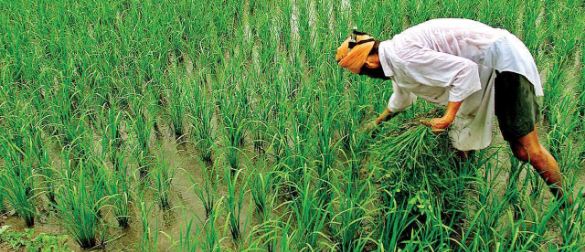“We are working out a detailed programme on crop diversification soon and we will provide financial support to the programme from our own budget as well as from the central sector scheme,” Singh told FE.
To curb depletion in ground water levels and reduce power usage, the Punjab government is firming up a plan on crop diversification, whereby around a million hectare (MH) or a third of water-intensive paddy grown areas in the state would be gradually shifted to alternative crops such as cotton, maize, oilseeds and pulses, over the next five years.
According to Gurvinder Singh, director, agriculture department, the state government will also provide incentives to farmers for shifting around 10% of wheat area to alternative crops such as oilseeds and pulses.
The crop diversification would entail financial incentives to farmers, procurement of crops by state agencies under the Minimum Support Price (MSP) operations and processing facilities. Annually, around 0.1-0.2 MH paddy sown will be shifted to alternate crops.
“We are working out a detailed programme on crop diversification soon and we will provide financial support to the programme from our own budget as well as from the central sector scheme,” Singh told FE.
Stating that paddy cultivation has led to over-exploitation of ground water resources in the state, the Punjab Economic Survey (2020-21) had stated ‘cultivation of rice would need the use of submersible pumps which are expensive, and unlikely to be suitable for marginal and small landholding farmers”.
The survey said there was a need to diversify crops and horticulture, pulses and oilseeds act as avenues for diversification.
According to experts, crop diversification in Punjab has been virtually a non-starter as because of the open-ended rice and wheat procurement system followed by Food Corporation of India (FCI) and state agencies, farmers are reluctant to adopt less water intensive crops because of lack of procurement or marketing avenues.
In the current procurement season (October-September) for 2021-22, Punjab has contributed more than 12.5 million tonne (MT) or 20% of total rice procurement of 56.81 MT to the central pool managed by FCI. In the ongoing rabi procurement drive for wheat (2022-23), Punjab has contributed more than 51% of the 18.77 MT of wheat purchased from farmers so far.
Officials said the Punjab government, from the current kharif season (2022-23), is promoting direct seeding of rice (DSR) which consumes less water, improves percolation and reduces dependence on farm labour. An incentive of Rs 1,500 per acre is being provided to farmers who adopt DRS technique and a budget of Rs 450 crore has been earmarked for it.
The state government is also encouraging farmers to take up short duration varieties of rice (which matures in 125 days instead of conventional varieties that take 135-145 days) such as PAU 126, 127 and 128 so that transplantation could be done using monsoon rains in July.
Official estimates indicate that farmers in around 50% of 2.4 MH of non-Basmati grown areas in the state have adopted short duration varieties of rice.
The state government agency, Markfed has started to procure summer moong through payment of MSP of Rs 7,275 per quintal. This year, short duration pulses variety was sown in around 0.1 MH.
According to a statement by agriculture ministry in Parliament in April, crop diversification programme initiated in 2013-14 as a sub-scheme under the Rashtriya Krishi Vikas Yojana in the Green revolution states such as Punjab, Haryana and western Uttar Pradesh, has brought only 0.63 MH under the demonstration of alternative crop at farmers’ field.



































